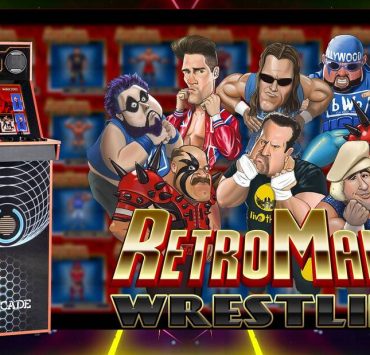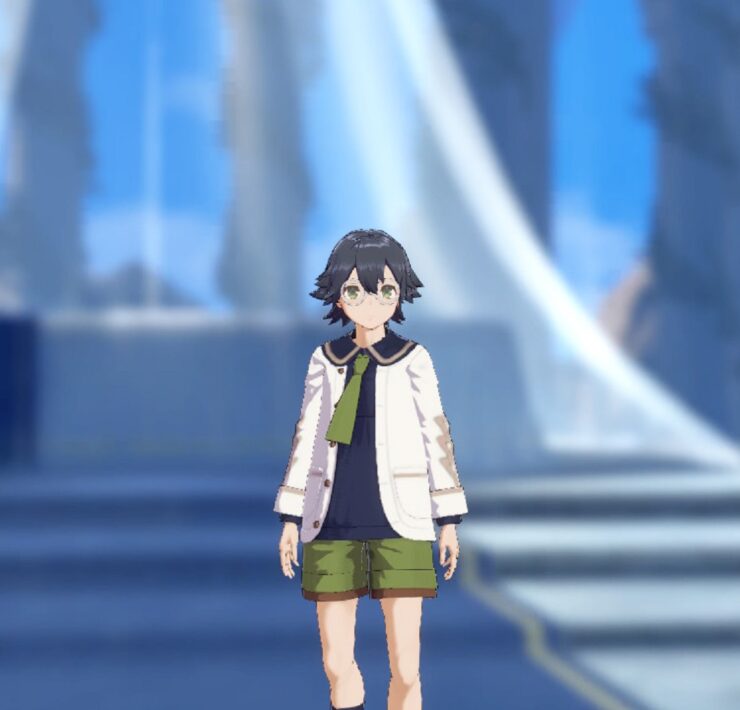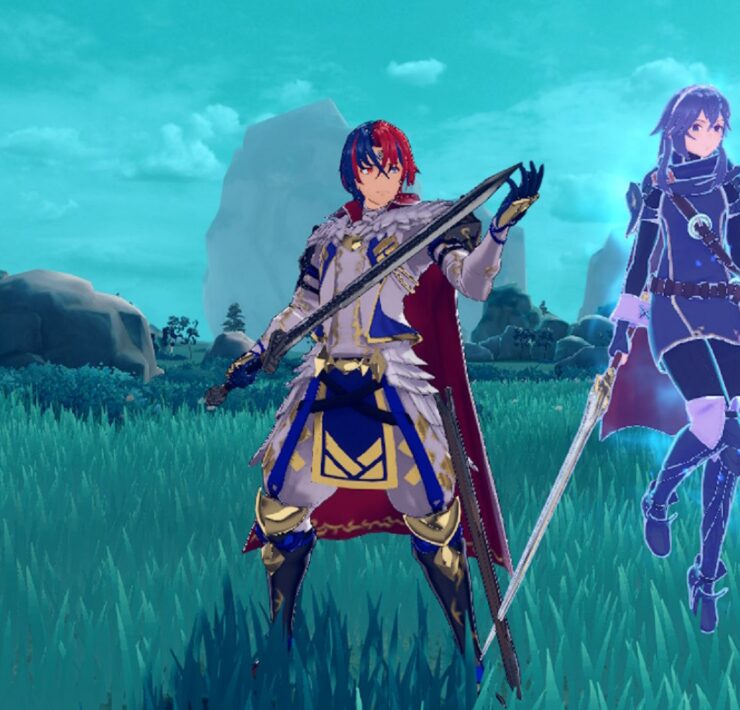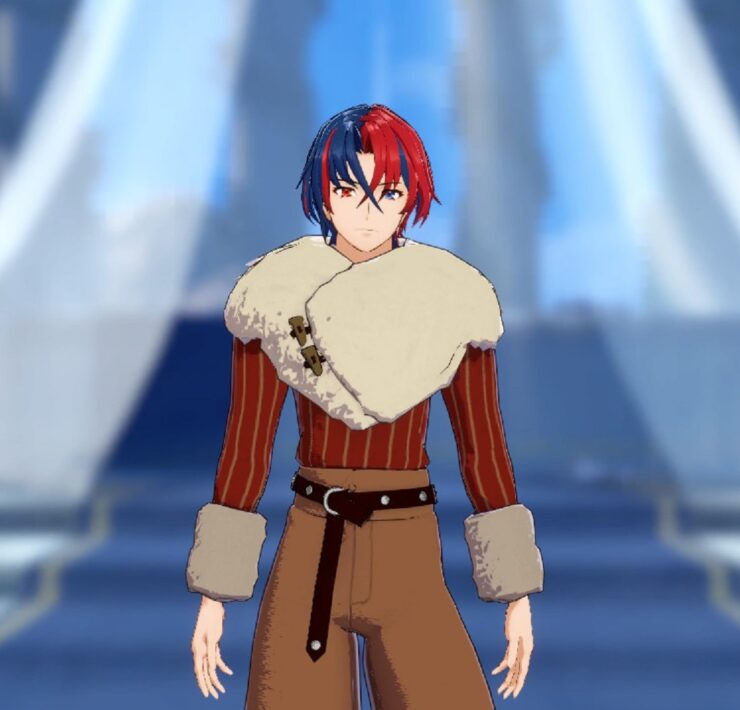Rogue Heroes: Ruins of Tasos Switch Review
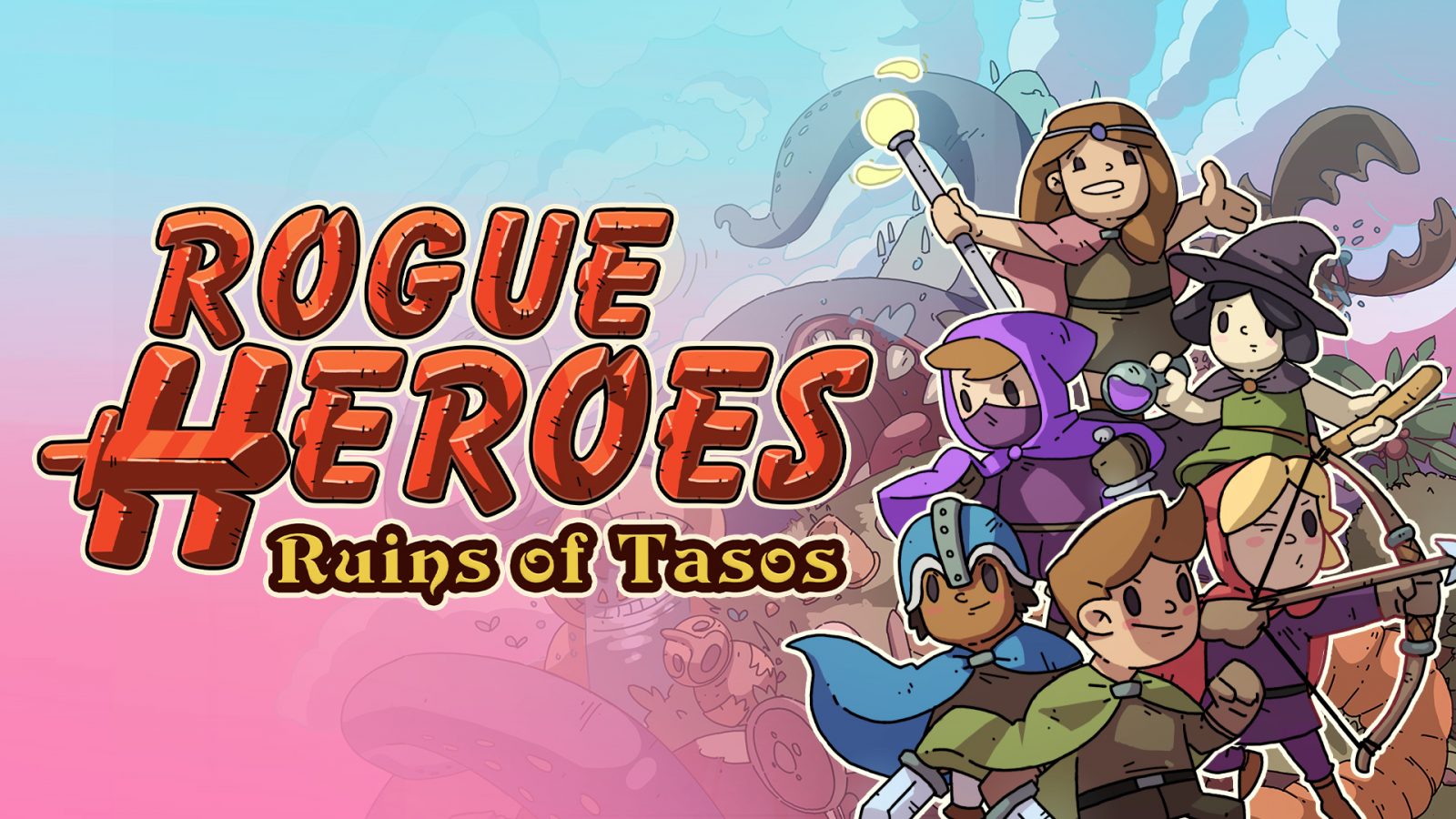
I was immediately drawn to Rogue Heroes: Ruins of Tasos when I saw the local co-op option. This looked like the kind of game I could sit down and play with my wife for a few hours as we were trying to distract ourselves from what promises to be a stressful few months for us. But is this game worth it’s $20 price tag? Let’s have a look and see!
When you drop into the game for the first time, you are given a basic tutorial that explains the game mechanics to you. The tutorial itself is something I was pleasantly surprised by, as it allows all players to complete it at the same time. It’s a small touch, but allowing all players to immediately start playing the game means nobody is sitting on the sidelines while cutscenes play or player one does everything. While you come out of the tutorial ready to get into the action, you are also encouraged to experiment with various tools that you discover along the way. This allows you to figure out different mechanics as you play through the game, giving yourself chances to play completely different styles within similar areas.
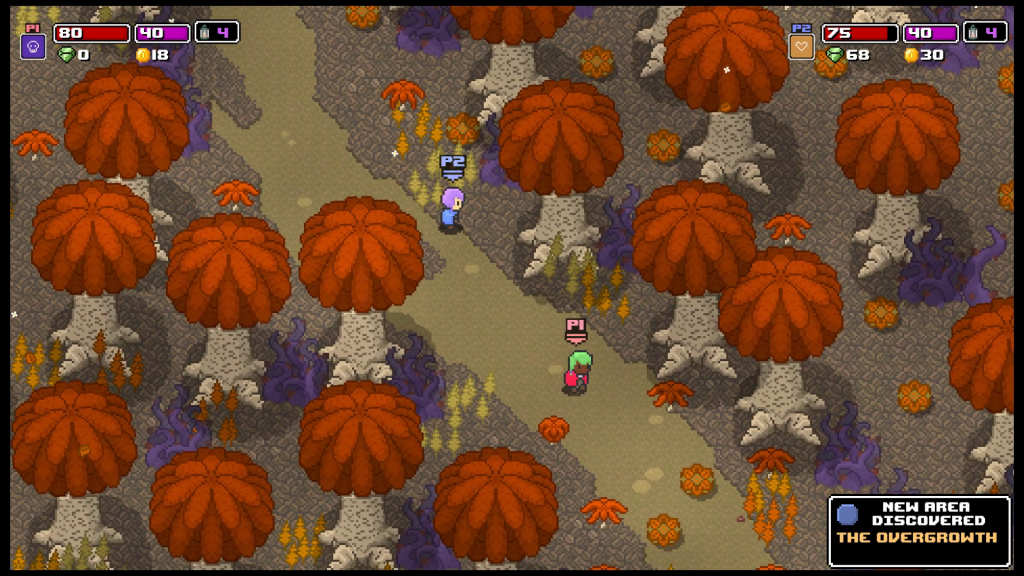
The controls are introduced to you nicely and are mapped well, and there isn’t anything that I’d consider frustrating or un-intuitive. You use the left stick to move, and the right stick can be used to choose which direction you swing your sword. You can use a fire ability that consumes magic, but you can also unlock other items on your travels. The closest thing to a downside is that sometimes the movement does feel a little too sensitive, but as you get used to it, you’ll find that it becomes less and less of an issue.
All in all, the game plays similar to an old Zelda game, which I imagine it’s supposed to. What Rogue Heroes: Ruins of Tasos does differently is the dungeons are procedural, meaning every time you enter a dungeon again, you’ll end up finding the place completely different. It’s a nice touch that keeps things interesting as you move from room to room.
The story has you (and up to three buddies) attempt to stop evil titans from resurrecting after the land of Tasos is settled by foreign explorers. Many centuries in the past, four goddesses gave their lives to seal these titans away. Now the titans are threatening to return, and only you can brave the dungeons and make sure the land of Tasos is safe.
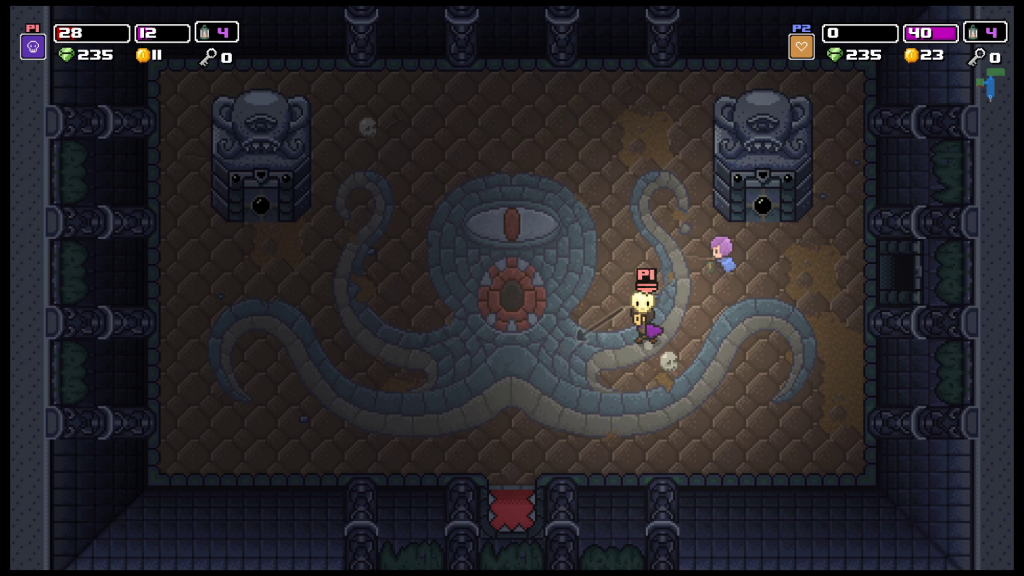
It’s a simple story, but it gives you enough to get started. However, as soon as you leave the house you start in, a man named Griff asks for your help. He needs you to help him to obtain some gems so he can build himself a shop. Once that’s done, he’ll offer to build other things for you in exchange for more gems, allowing you to unlock upgrades and bonuses. It’s a cool feature in my opinion, as you can place the buildings where you want them to be built and end up with a town that shows off all of your hard work.
It all looks really nice, too. Either I have a thing for sprite-based graphics, or this game has a really lovely look. Whichever way it is, you aren’t going to be getting super-realistic graphics, but you are instead going to be treated to something more traditional and timeless. There’s a reason people still use sprites to this day, and this is a game that will show you why.
The music within the game is fitting to the genre, and the sound effects are all satisfying. It’s not the kind of soundtrack I would pick as an all-time great, but for what it is, there’s really nothing to complain about. Generally the music does a good job setting up the atmosphere in each area around the game.

There is a massive open world that you can traverse. However, different areas will have enemies of varying strength meaning you may need to leave certain areas for later, but I imagine more skilled players might not be bothered by entering harder areas first, or they may even enjoy the challenge!
And challenge is a good word to describe Rogue Heroes: Ruins of Tasos, as the game makes you think. The dungeons have puzzles that vary in difficulty, but that difficulty ranges from the enemies being hard to beat (Whether that’s their strength or their numbers) to the puzzles making you think. Sometimes it’s even a combination of both, meaning you have to try and figure out how to move a fragile pot from one side of a room to another without getting hit by the snakes, rats, and skeletons who may block your path. My point is, there is a good amount of variance to the dungeons, and so the mileage you’ll get from the dungeons alone is quite significant!
When you go into a dungeon, you are locked in. There aren’t many ways to escape, and especially in the early parts of the game, you are going to leave in a body bag. The deeper you get into a dungeon, the more dangers await you. So what happens when you die? Well, my wife was the first of us to perish in combat. Immediately she was turned into a ghost who could interact with items and set off traps, allowing her to assist me as I continued to run through the dungeon. It’s a cool feature that means that a player who dies is not going to be sitting around doing nothing but waiting for other players to either revive them or die themselves. If you are careful with the skull of a dead player, you can eventually find an altar where you can revive them.
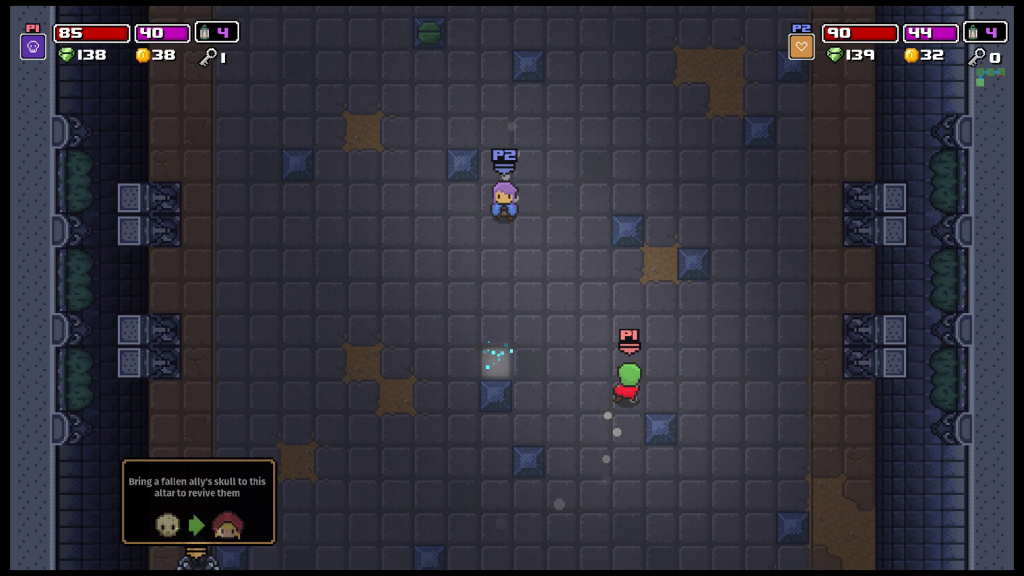
Once all players die, you wake up in bed almost as if nothing ever happened. You do, however, get to keep all the gems you collected throughout the adventure, allowing you to build up your town or purchase upgrades for yourself. Players each have their own stashes of gems, meaning that everyone can choose different upgrades, and when you try to build something in the town, all players can choose how much of the fee they’ll contribute. This can allow you to let less skilled players spend their gems on upgrades while the players having an easier time can help to unlock more things to enrich the game experience. All of this really drives home that while the game is difficult, it isn’t brutally punishing. My wife isn’t a traditional gamer and is more comfortable with games like Stardew Valley or Animal Crossing. However, even she found that Rogue Heroes: Ruins of Tasos was great for her skill level.
And that’s something that shouldn’t be overlooked. Me? I play all sorts of games and I tend to get sucked in and play them for a long time. I’d definitely consider myself a hardcore gamer, and there was a lot for me to get out of this game. The fact that my wife, someone who would barely even be classified as a casual gamer, felt the same way as we played the game together says a lot. No matter who you play with, no matter what their skill level, you can all enjoy this game, and you can all enjoy it together.
I don’t want to under-emphasize the local co-op, because it’s brilliant. Heliocentric Studios and Team17 Digital have figured out a brilliant formula here. It’s absolutely fantastic to know that there are still indie developers out there who cherish the idea of sitting on the couch with some friends, ordering a pizza, and maybe chugging a beer or twelve while you enjoy a game together. What they’ve done is created a game that, if enough people give it a chance, will create memories and bonds between friends similar to how my friends and I experienced Goldeneye or Mario Party on our Nintendo 64 consoles back in the day.
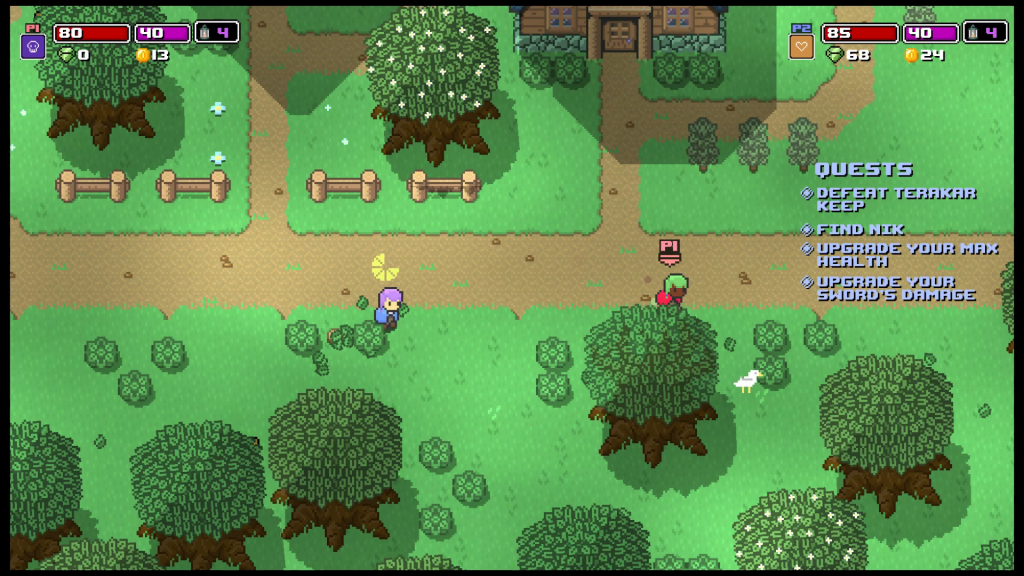
So should you buy this game? If I’m honest, paying full price for this game is absolutely worth it. My Nintendo Switch game collection is extensive, and a good chunk of the first party titles within haven’t impressed me nearly as much as Rogue Heroes: Ruins of Tasos has managed to.
So don’t go waiting for a sale. If you haven’t pre-ordered this game before its release on the 23rd of February, you are absolutely missing out. As a matter of fact, I’m ending this review now so I can go and play some more, and you should stop reading it and go buy it, too!
Rogue Heroes: Ruins of Tasos review provided by Nintendo Link
Developer: Heliocentric Studios
Publisher: Team17 Digital
Release Date: 23rd February, 2021
Price: $19.99, £15.99, 19,99€
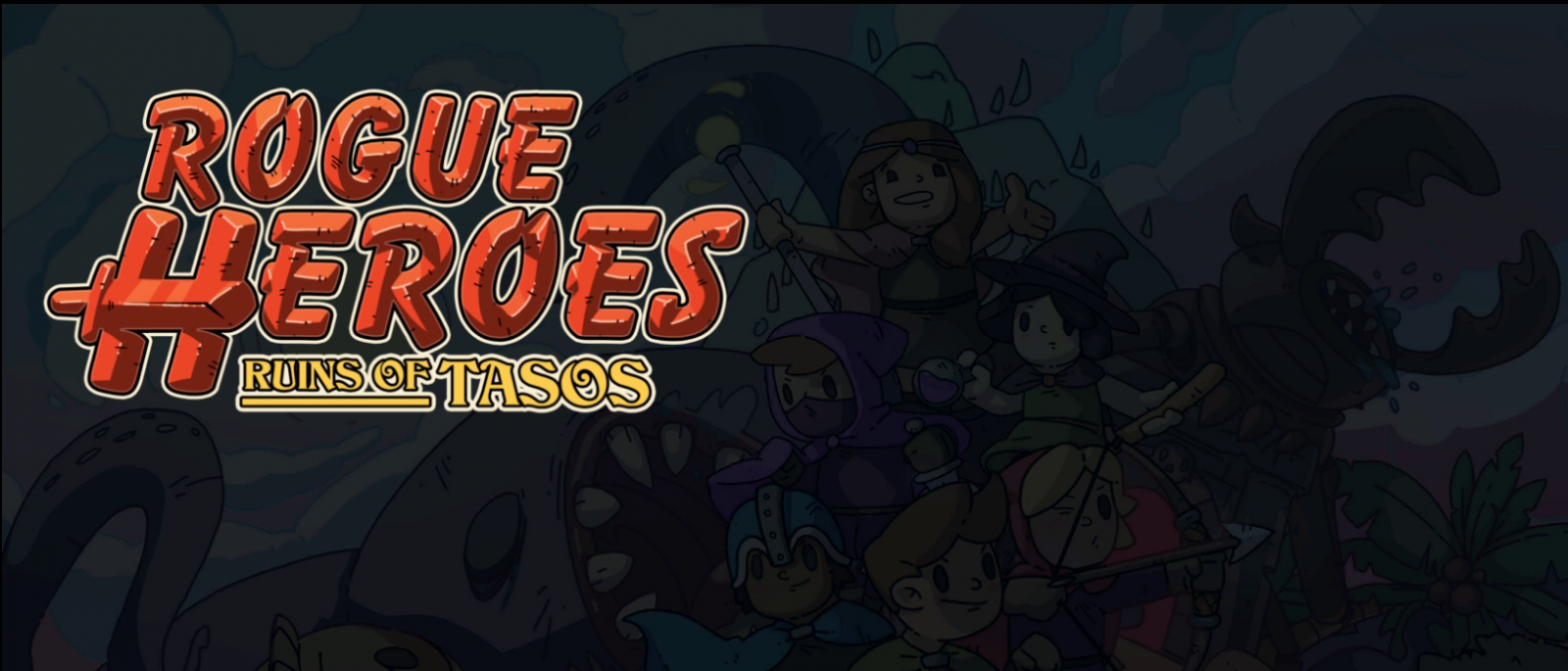
Great local co-op
Enjoyable for gamers of all skill levels
Difficult without being frustrating
Fun town building mechanic
Proceduraly generated dungeons add replayability
Movement is a little sensitive
Might become a little bit repetitive if you replay the same dungeon over and over






